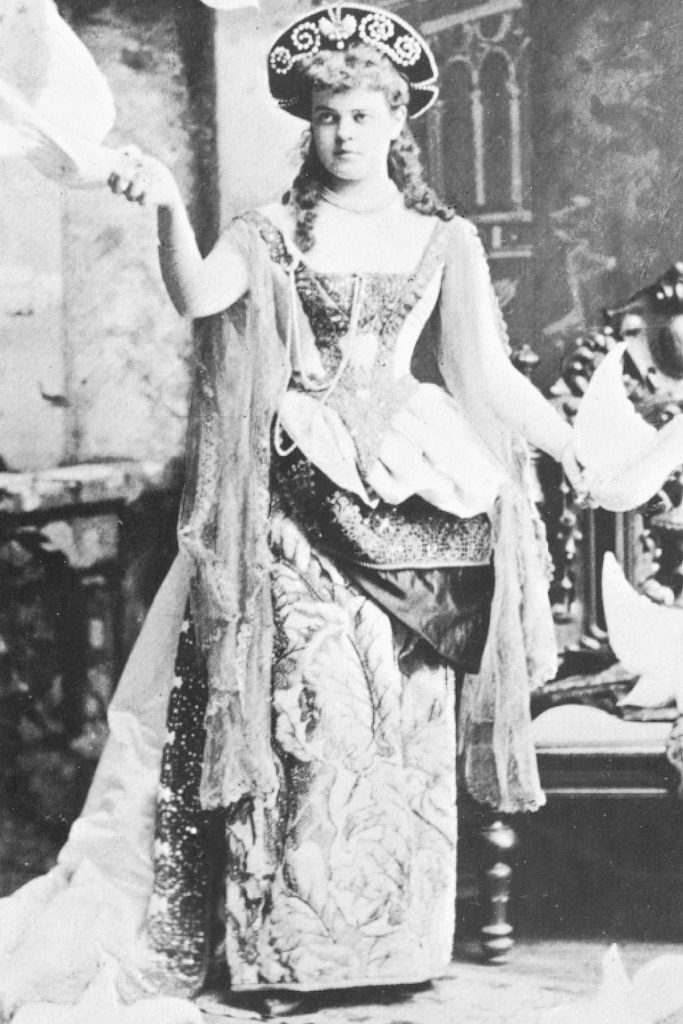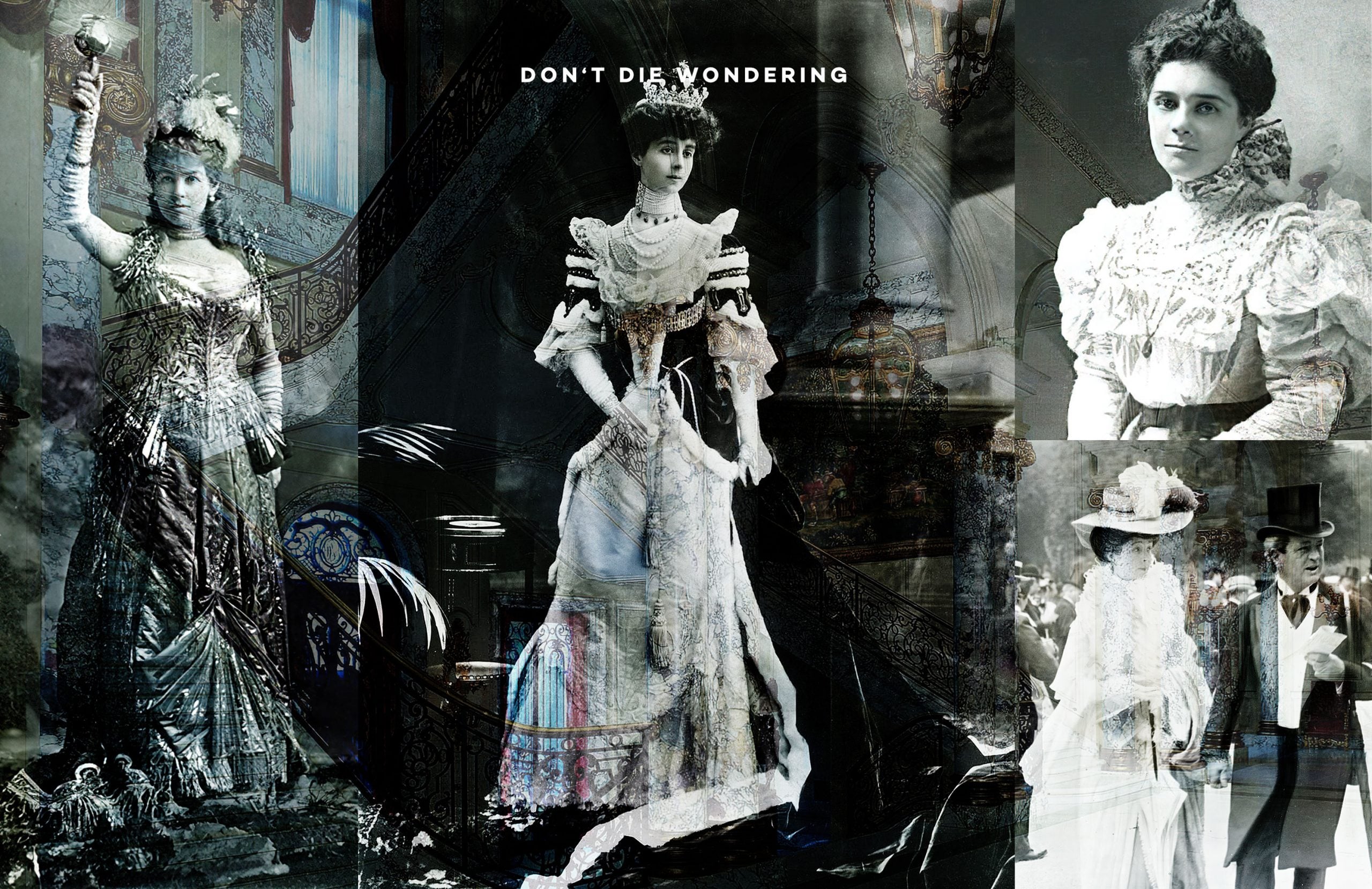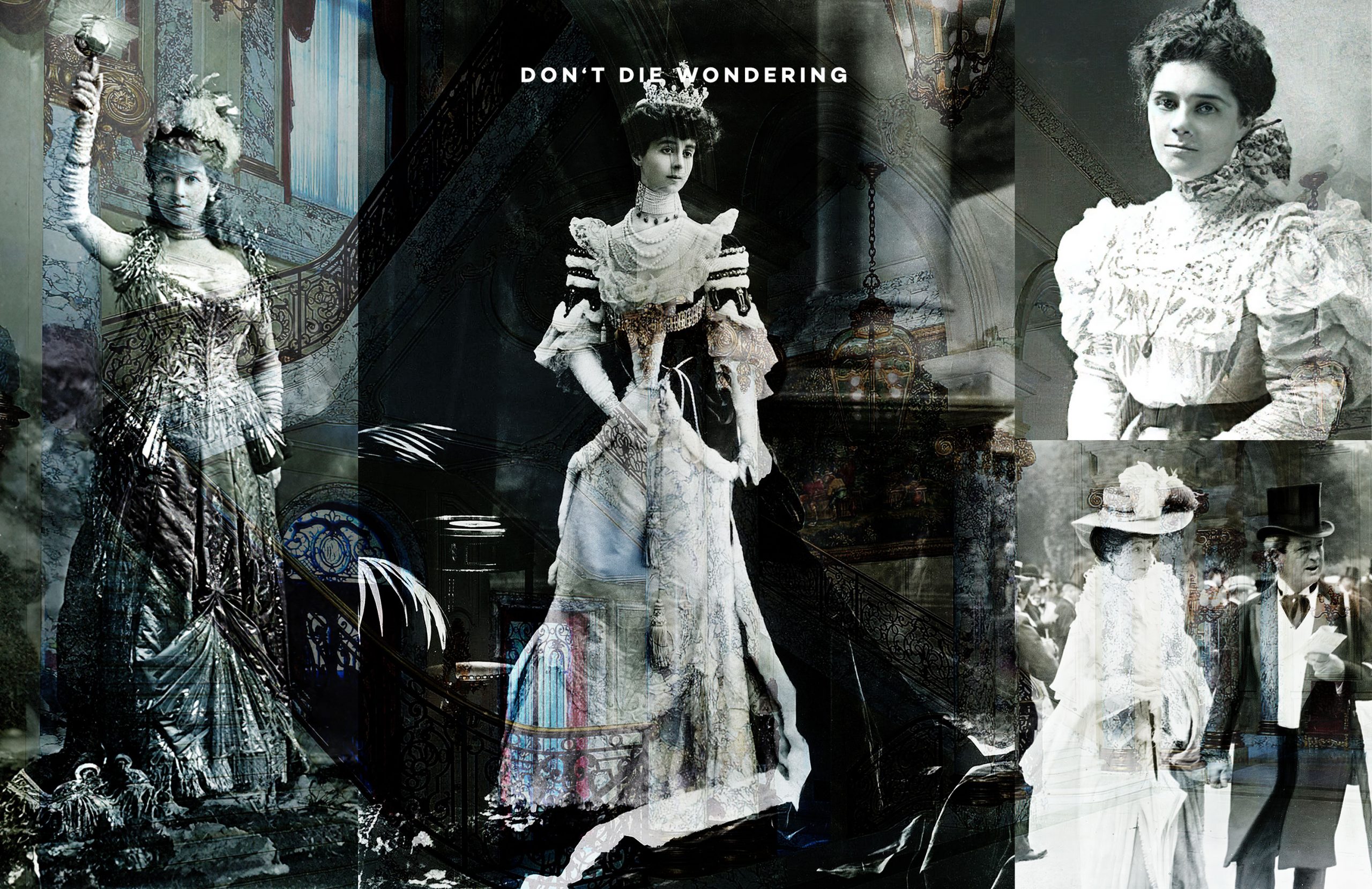Alva Vanderbilt was a shining example of calculated social climbing at its finest. While it may seem strange that someone with a surname like hers would have difficulty getting invited to events, the Gilded Age was a different era. Old Money was not interested in New Money, and Cornelius Vanderbilt’s unpleasant reputation continued to tarnish his descendants. An interesting and iron-willed woman, Alva left her mark on the Vanderbilts, the Gilded Age, and ultimately, American history.

In 1853, Alva Erskine Smith was born into a prosperous Southern family. She enjoyed the luxuries of wealth—summer in Newport, schooling in France—but she despised the meek role that was imposed on girls. She enjoyed playing with boys but made sure to taunt them back when they taunted her. On one occasion, Alva was demonstrating her toughness to a male friend by climbing a tree. The boy made the mistake of removing the ladder and pelting her with apples. ‘I’ll show you what girls can do,’ Alva said as she scrambled down the tree, leapt on the boy, pushed him down, choked him, and repeatedly bashed his head on the ground. Alva afterwards thought that if there hadn’t been some concerned onlookers present, she could have murdered the poor boy.
She also showed a precocious talent for getting what she wanted. The Smith family was on the verge of doom in the early 1870s. Alva’s mother Phoebe died, and her father’s economic ventures failed miserably, never to recover; he would eventually succumb to illness as well. Recognizing that no male relatives could step in and provide for her and her sisters, Alva vowed to save the family from ruin by marrying advantageously. A friend introduced Alva to William Kissam Vanderbilt, grandson of Cornelius Vanderbilt. Alva and William married in New York on April 20, 1875.
So, despite the Vanderbilts’ damaged reputation, Alva had no intention of being overlooked by the social elite, instead devising a brilliant plan to position herself as New York’s Queen Bee. Whereas nowadays you might gauge a socialite by her Instagram followers, Mrs Caroline Schermerhorn Astor was in charge of creating an actual annual social registry in the late 1800s. Mrs Astor’s ballroom accommodated around 400 guests, so she sent out 400 invites to her annual ball every year – and let’s just say that if you weren’t invited, you weren’t part of the social set.
Yes, 400 might seem a significant number of invitees, but Alva Vanderbilt was unsurprisingly not one of them. So, as soon as Petit Chateau (her Gothic-inspired Fifth Avenue house that took up the full block between 51st and 52nd street) was completed in 1883, Alva went to work arranging the party of the century.
Alva sent out 1,200 invitations to her Masked Ball, but in classic petty socialite fashion, Mrs Astor didn’t receive one. Mrs Astor’s daughter, keen to attend the party, had her mother pay a visit to Mrs Vanderbilt, and eventually, she was invited, but her pride was, of course, severely bruised. Alva’s suitably snarky excuse was that she had never been asked to Mrs Astor’s home before and hence had no address to send the invite to. Amazing.

Having cemented her place in the high society of the Gilded Age, and now living off her husband’s gargantuan inheritance, Alva enlisted Richard Morris Hunt to construct a magnificent edifice in Newport, adjacent to Astor’s summer home, Beechwood. Marble House elevated cottage construction to a new degree of opulence. Alice and Cornelius Vanderbilt II, Alva’s in-laws, may not have required such a beautiful replacement for their burned-down retreat, The Breakers, if Alva hadn’t raised the stakes with Marble House. The Breakers’ debut must have been a difficult pill to swallow for Alva since it pushed Marble House to second place in the opinion of many. Hunt also died just before The Breakers was finished, denying Alva the opportunity to hire him to create a response.

It was also in Newport that Alva pulled off her most remarkable accomplishment: surviving the social equivalent of a near-death experience after divorcing her husband. Finding a reason wasn’t difficult; William’s infidelity had long been rumoured. The issue Alva created by mentioning infidelity in her divorce case though, was that she was defying an unwritten rule: rich men felt they could have everything they wanted. However, William was caught in with another woman in Paris in 1894, providing Alva with the proof of adultery she needed.
After her divorce, Alva became an outcast, and her peers judged her harshly. Nonetheless, she revived her social status, putting on a ball in Marble House that was nothing less than a shimmering success. She married her daughter to the 9th Duke of Marlborough and two months later got married herself, making a husband out of Oliver Hazard Perry Belmont. Belmont was a Newport acquaintance who had joined her and William on previous Vanderbilt yacht voyages. With Belmont by her side, Alva was content and may have lived the rest of her life happily along with him had he not died of peritonitis in 1908.
However, widow Alva quickly found something to occupy her time: the women’s suffrage movement. If Alva could see the future, she would likely be unhappy with how few would remember her efforts for women’s rights. She founded the Political Equality Association in 1909 as a catch-all vehicle for her suffrage objectives. She then became active in the National Woman’s Party, which still exists, but is now an educational organisation and an archive.

She repected Emmeline Pankhurst and sponsored her 1913 lecture tour in the US. Alva held suffrage conferences at Marble House and organised fundraisers on its grounds. She used her status to persuade President Wilson to support a constitutional amendment that would give women the vote, a goal that was achieved in 1920.
A fierce social climber and a staunch supporter of women’s suffrage – we admire Alva’s determination.


